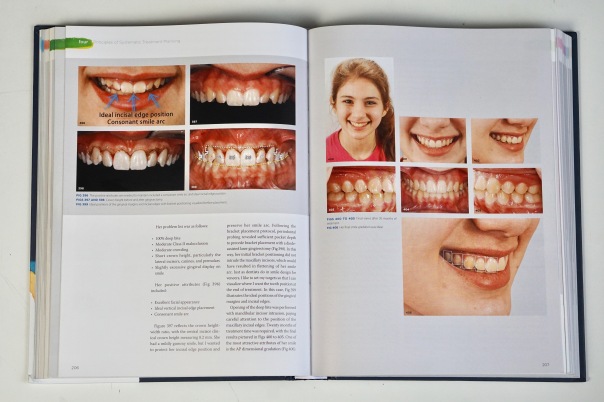I spend my summer locked down in Moscow with almost no possibilities to have a trip abroad. On the bright side, I do have my patients coming back from the Covid break to resume the treatment. And I also have some time for reading.
I have recently finished an interesting comprehensive book by Dr David Sarver, Dentofcaial Esthetics: From Macro to Micro. I have already made two blog posts on it (the 1st and the 2nd). Now I am going to give you three main takeaways of the entire text… in my opinion, of course.

1. Smile matters
The number one message that refrains throughout the book could be stated as such: the patient comes to you to get a pleasing smile, not to fix a few cephalometric values that have been nettling him or her for ages. I couldn’t agree more and it’s certainly true that I often used to miss the smile itself caring more about occlusion and cephalometric parameters.

The sixth chapter is dedicated completely to the issue of smile esthetics and provides you with helpful guidelines on how to evaluate and enhance smile characteristics. One of the most commonly used method that Sarver uses is a diode laser crown lengthening. In this chapter, he tells a story of how he once was pointed out a slight smile asymmetry in one of his finished cases by a general dentist who later corrected it with a diode laser. It was a moment that made Sarver fully appreciate the elements of dental and gingival esthetics and stimulated him to implement this procedure into his own practice.
2. Patients grow
Another valuable point that Sarver is not tired to reiterate is the fact that patients’ facial and smile characteristics do change during a lifetime. He presents a number of bar charts of how incisor dispaly, gingival display, philtrum height, etc. change during life. He sums up this idea saying: “When I finish treatment on a 14-year-old, I want them to look 14 years old.” In other words, it’s fine to leave a teenager with a mild gummy smile expecting it to be mitigated at the age of 25.

3. The most important orthodontic tool is still the one between our ears
In the very beginning Sarver states that “the style of this book is to ask a lot of questions and encourage you to think”. This resembles the attitude of his mentor, Willam Proffit, about whom Sarver writes: “he made me think and arrive at a conclusion on my own”.

Such style is demonstrated for each and every case in the book, including perhaps the most challenging cases that are presented in two last chapters, on missing teeth and orthognathic surgery.
This book is truly a milestone of the author’s four-decade-long career and I enjoyed reading it a lot.
This is my third blog post on this text and I am also going to record a video on it later. If you are interested, please consider subscribing to my YouTube channel.
